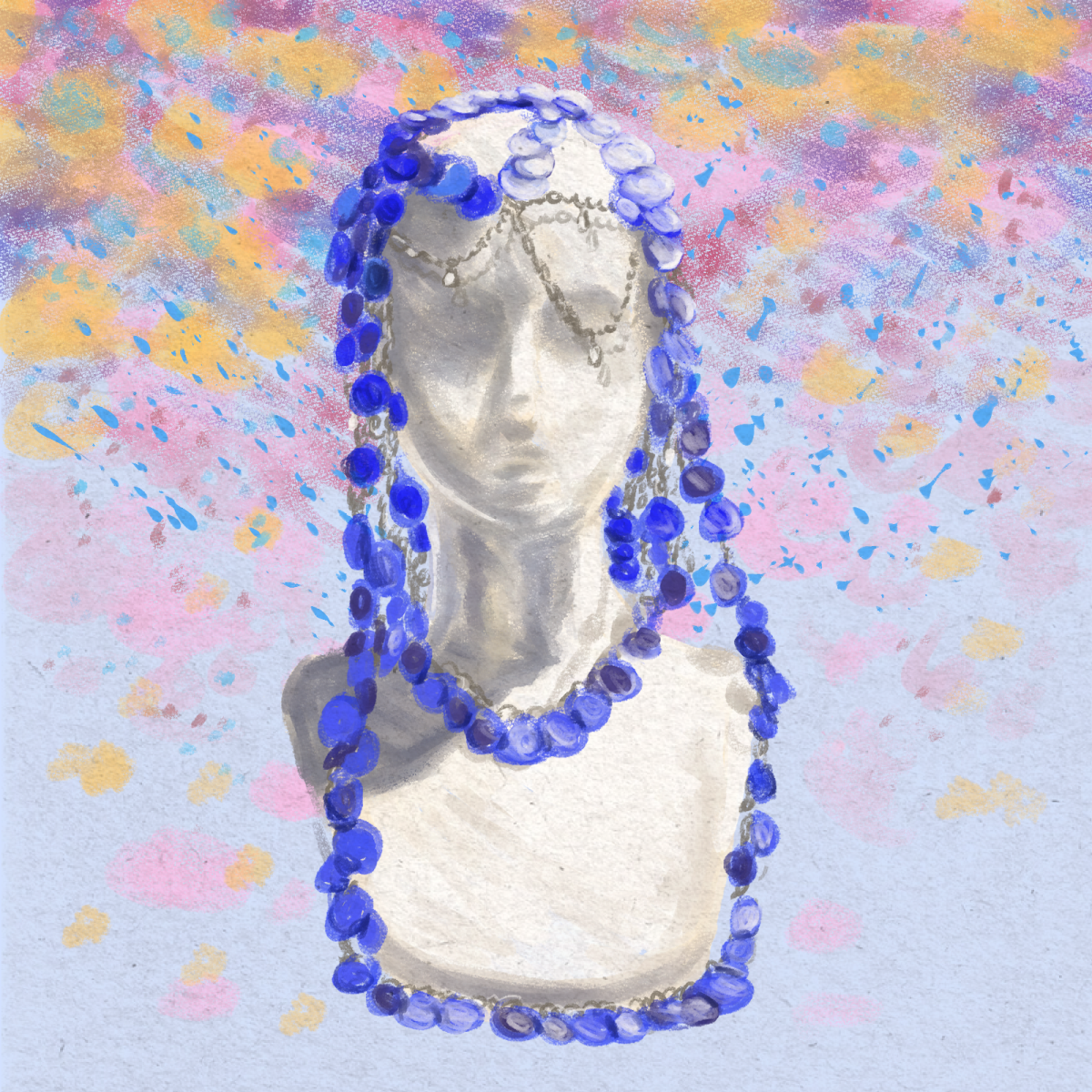Showcasing newly developed sustainable sequins, “Particles of Color: Where Science Meets Fashion” debuted at the Texas Science & Natural History Museum this past Saturday with an exhibit of over 50 objects created by students, local and foreign designers from around the world.
After working to research and produce plant based, biodegradable and non-toxic sequins since 2019, Jessica Ciarla, associate professor of instruction in textiles and apparel and creative director for the museum exhibition, felt the work reached a place where its promise could showcase to the public in an exhibit. The objects span from cowboy boots to paintings that use sequins to embellish their style.
“The point is to see the versatility of the sequins and how they can be applied in various mediums, and that includes textile designers, artists, jewelry designers, fashion designers,” said Ciarla. “Really it’s not about creating this specialization in terms of ‘Oh, it’s only for fashion.’ It’s fashion and art, so … the diversity that’s part of being sustainable is creating something that’s inclusive and that can be applied in a lot of different ways.”
Ciarla said by featuring pieces from an array of designers and artists, she could curate a presentation of how the sustainable sequins could be used on the market.
“I have a designer in Copenhagen, Denmark, a sustainable fashion designer who does a lot of menswear. I have a jewelry designer in New York who works with Carolina Herrera. I have local designers in Austin — all different levels.” said Ciarla. “I wasn’t trying to isolate this. I was just trying to see, in terms of diversity and inclusivity, ‘How widespread is our customer demographic who’d want to use this?’ and ‘How would they use it?’ It’s like a study in customer discovery and celebration of artistic creativity.”
Carolyn Connerat, managing director of the Museum, said the exhibit holds a space in the Science Frontiers gallery.
“The Science Frontiers gallery showcases the advanced research happening at the College of Natural Sciences and the University that makes a positive impact on the life of the natural world,” Connerat said.
Connerat said the exhibit offers a unique medium for a wide audience to learn about the science behind sustainability, creating a multi-sensory visual and tactile experience to educate visitors about the impact clothing holds on the environment.
“The fashion and artwork that we have up there helps tell that story and make it more accessible for many people who might not otherwise learn about these kinds of things,” Connerat said.
Idalyis Bunyavong, a textiles and apparel junior who visited the exhibit, said the exhibit reinvigorated her interest in sustainable fashion.
“It reminds me of the importance of the sustainability issue and my responsibility to take part in the movement forward to make fashion more relevant in a sustainability view and also as a way of service for my community,” Bunyavong said.
While Ciarla feels proud to see her research come to fruition in the exhibit, she said she plans to continue advancing the work.
“I’m gonna start an actual lab that will be running in the spring and fall on this sequin research, and then we’re also gonna develop other sustainable materials.” said Ciarla “It feels like a new chapter is beginning. It’s not like it’s a closure. It’s the start of another thing.”














